- Why do icebergs float? What would happen if ice was heavier than water?
- Why do rising ocean temperatures effect marine animals?
- What makes the ocean salty? Is it possible to change ocean water into fresh water?
- What is the Great Ocean Conveyer Belt and how does it work?
- What happens to water when we change the level of salt or change the temperature?
There are so many fascinating questions that can be asked when thinking about water on Earth! Each of these questions can be answered in part by the following two simple Science experiments for kids. While exploring how the properties of water can change in different circumstances, your students observe and record how temperature and salinity affect the density of water.
Let me add, it’s always a great idea to try these experiments at home before you do them with your class for the first time. Just to make sure you know any little tweaks that are needed to illustrate the concepts you are exploring!
Understanding Salinity – A Salt Water Density Experiment
Use this experiment to introduce the concepts of density, mass, salinity and buoyancy.
Download and print the Salt Water Density Experiment resource and prepare the materials described.
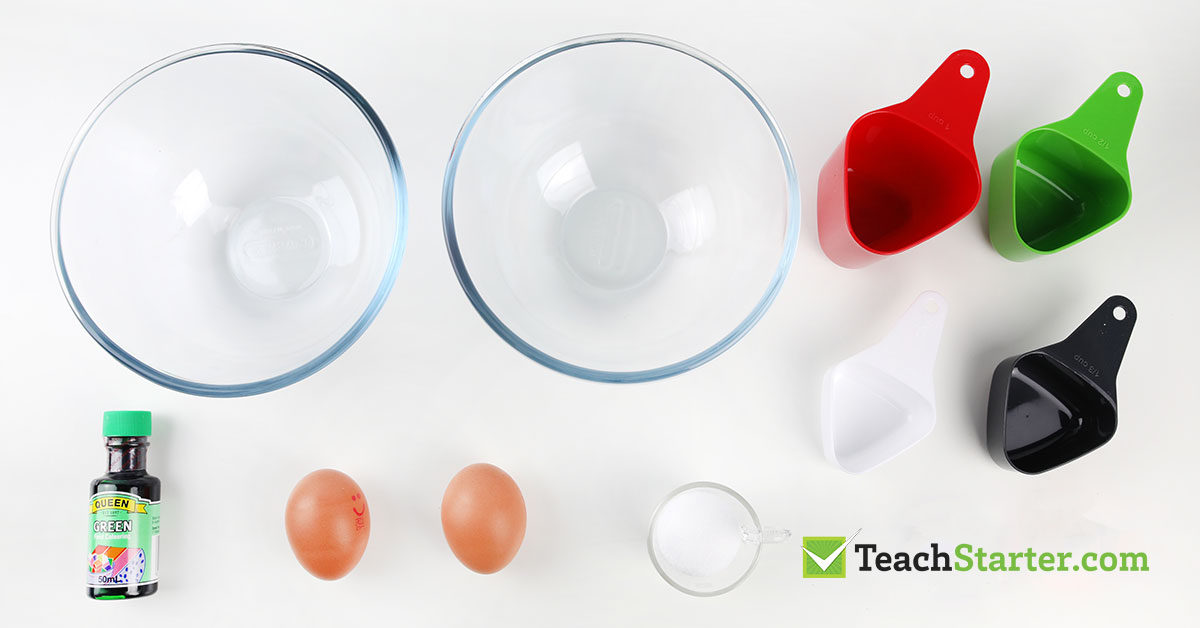
In this experiment, you and your students will use one bowl of fresh water and one bowl of salt water to explore how salinity affects the buoyancy of different objects.
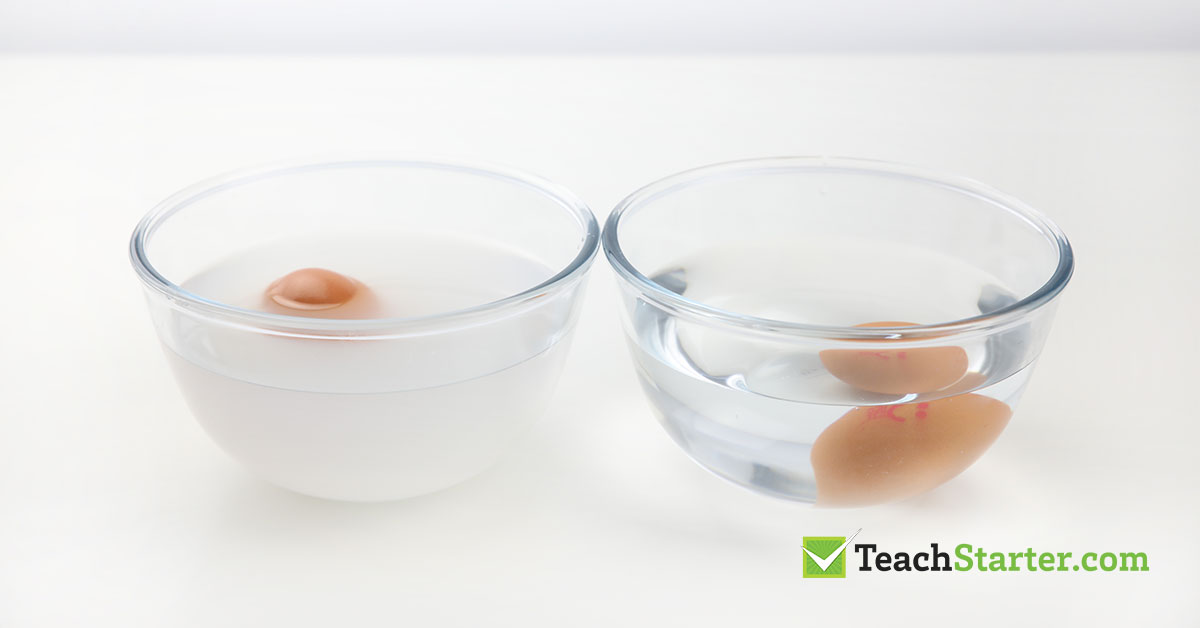
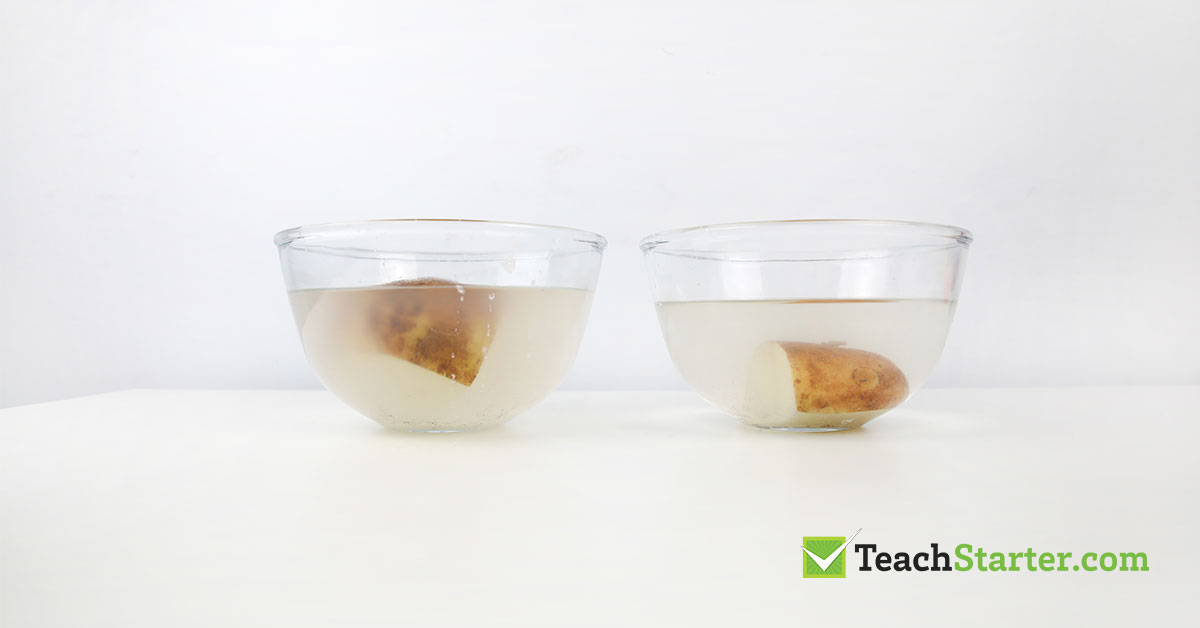
This experiment also uses food dye to explore how liquid molecules behave differently in fresh water and salt water.
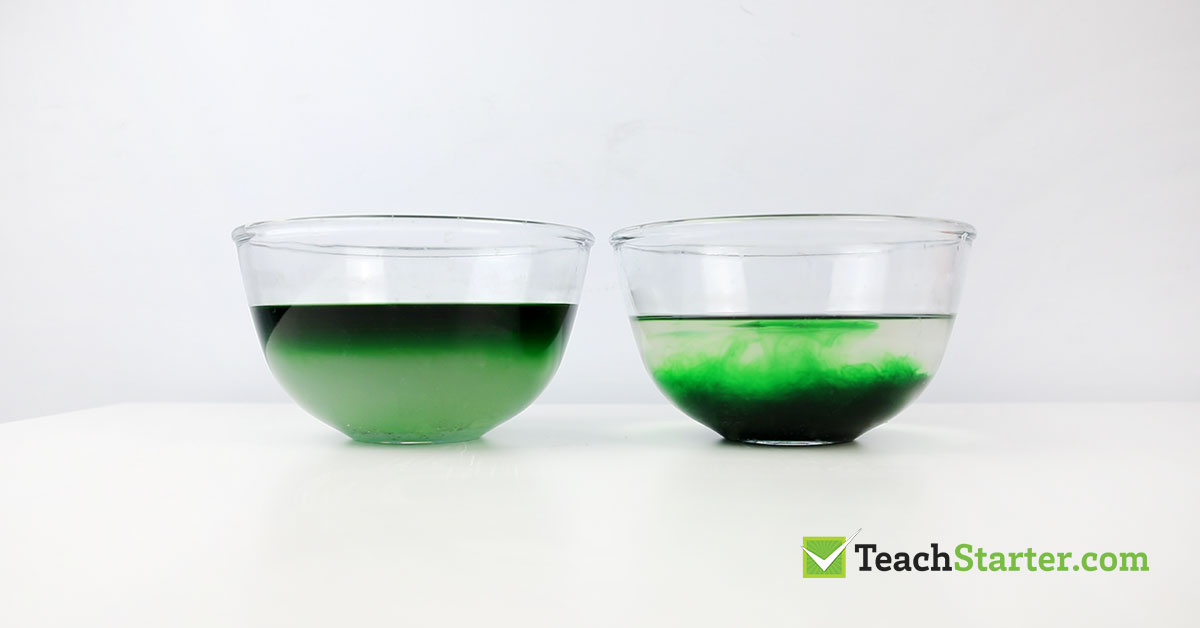
When your students understand how water behaves differently depending on its density, they can begin to understand more about topics such as:
- the effects of freshwater run off from melted sea ice in the Antartic
- how different parts of the ocean have different levels of salinity
- why objects that would normally sink (like people) can float in bodies of water with high salinity like the Dead Sea in the Middle East and the Great Salt Lake in the United States
- how salinity affects the different the layers of the ocean and the types of marine life that can live in each layer.
Understanding the Effects of Water Temperature – A Simple Science Experiment
Use this experiment to explore the concept of temperature and its effect on the speed that molecules move. This science experiment for kids will quickly illustrate how molecules move faster in hot temperatures and slower in cold temperatures.
You will need:
- 3 glasses
- Cold water
- Room temperature water
- Hot water
- Food dye
- Dropper
- 3 stop watches
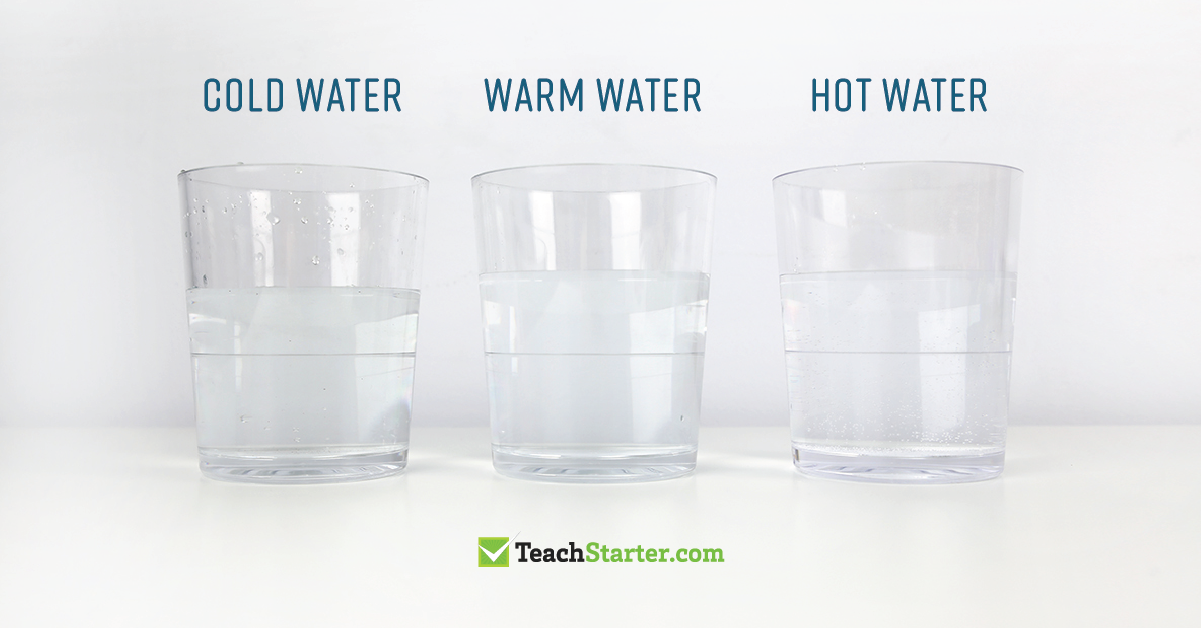
What to do:
- Fill one glass with cold water, one with room temperature water and one with hot water.
(It is best to prepare the cold water and room temperature water earlier. Leave one glass in the refrigerator for at least an hour prior to the experiment. Leave another glass sitting out for at least an hour too, as if the water in your pipes is a bit cold this will reduce the efficacy of the experiment.) - Place a stop watch in front of each glass.
- Fill the dropper with food dye.
- Drop 2-3 drops of food dye in each of the glasses and observe how the food dye behaves in each different water temperature.
- Start the stop watches when the food dye is dropped.
- Stop each watch as the food dye has mixed completely with the water.
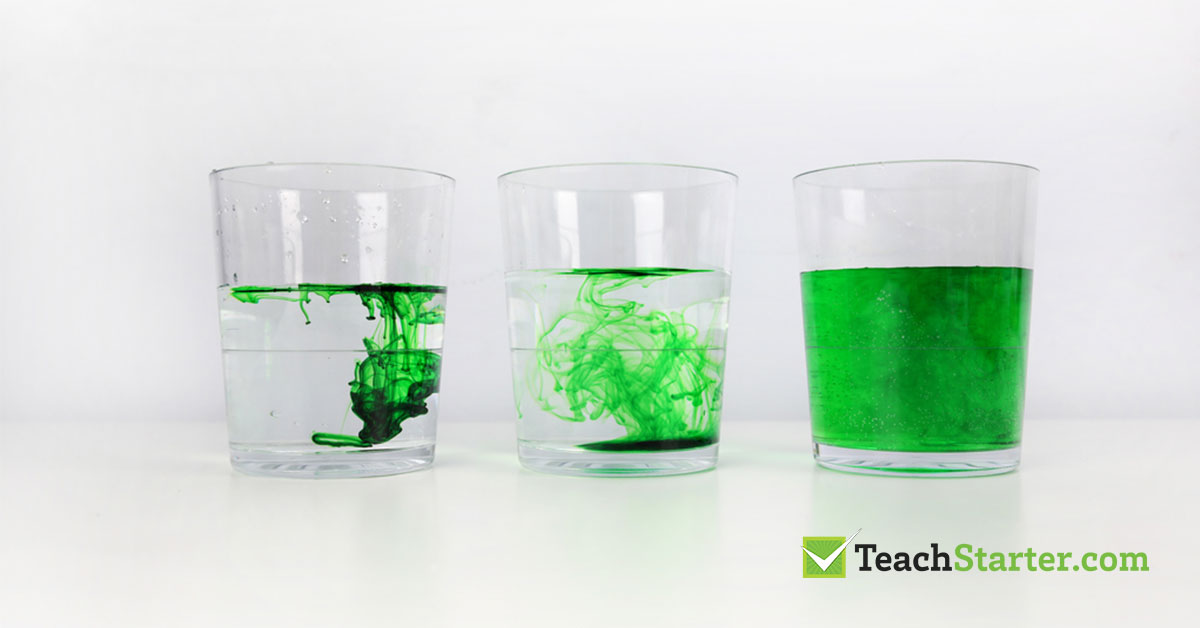
Your students will be able to see how the food dye mixes quickly with the hot water because the molecules are moving quickly. It takes longer to mix in the room temperature water as the molecules move slower, and in the cold water, the food dye will take the longest to mix as the molecules move at the slowest speed of all three samples.
Eventually, the food dye will mix through the water in all three glasses. Students can predict how long each will take and then record the final times on each of the three stop watches.
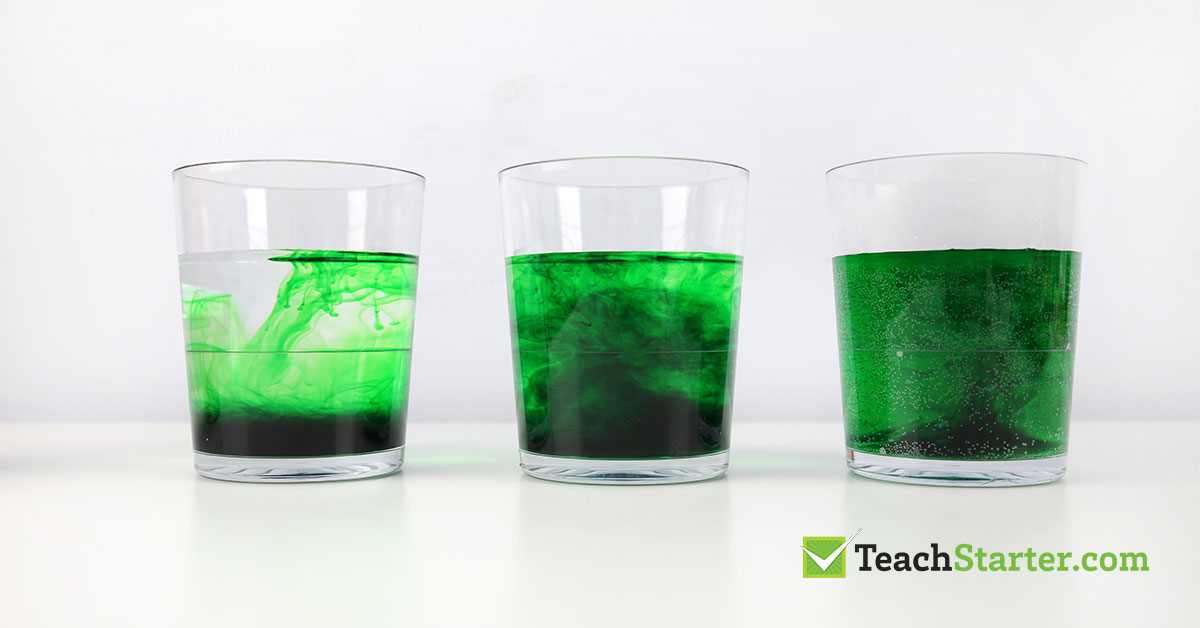
Life on Earth cannot exist without water which is a pretty good reason why we need to understand it. Luckily almost 70% of our planet is covered in it. The ocean accounts for over 96% of all water on Earth. However; people, crops and animals in need of drinking water cannot use any of the ocean’s water without changing its properties.
However, the ecosystem of our earth is like a giant spider’s web. When one part of the ecosystem changes, it has ripple-like effects on all different parts of our environment. This makes these two experiments an excellent introduction to some of the concepts your students need to understand when exploring some of the issues surrounding ecosystems, sustainability and the environment.
Take a look at some of the other amazing Science teaching resources that you can use to explore these issues with your students!
[resource:461281][resource:461368][resource:529028][resource:61634][resource:538182][resource:162752][resource:61637][resource:19359][resource:10172][resource:13908][resource:59678][resource:59642][resource:461392][resource:461262][resource:419194][resource:19327]







Comments